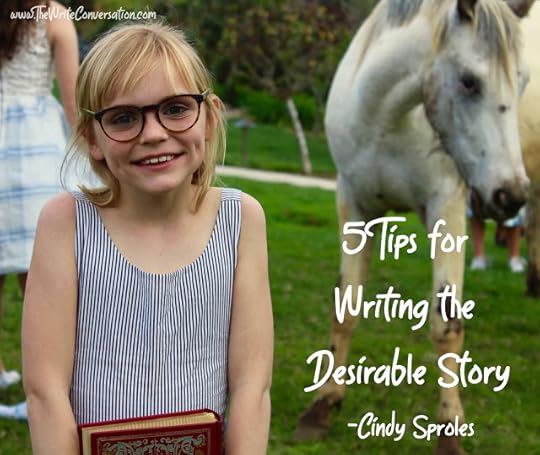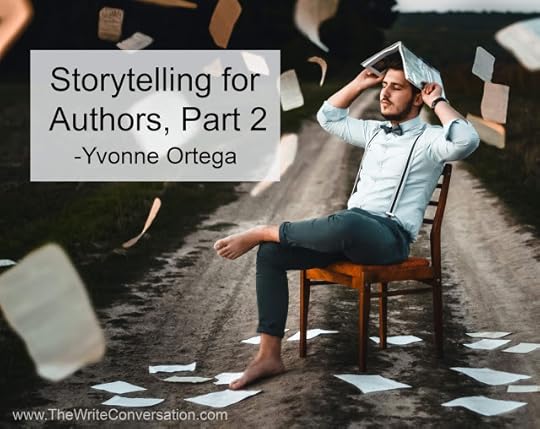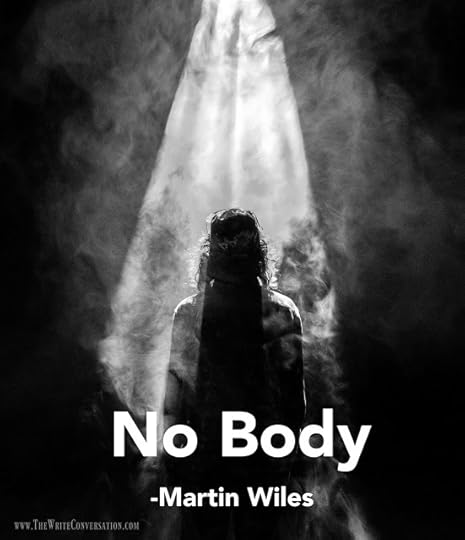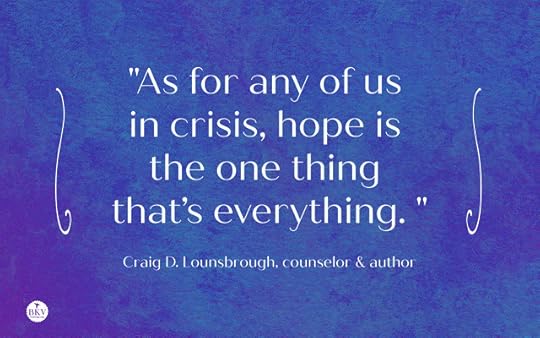Edie Melson's Blog, page 203
April 17, 2020
Digging Deep & Writing During Isolation

by Emme Gannon @GannonEmme
As the glow from my computer screen illuminated the darkened room, I pondered my weekly writing goal. Disappointing. Instead of producing a flurry of words my mind had turned to mush. Many of my writer friends had reported a creative surge in their word count during this coronavirus isolation. My words would come, but like a firefly whose light departs in the early morning hour, my story angle would disappear, ensnared by news reports of doom. Self-isolating by oneself can often cause our fears to shout at us, igniting a scenario of what ifs. Our former multi-tasking and coping mechanisms are crushed with the reality that we are not really in control of our lives. This world-wide coronavirus has rendered us all vulnerable, from royalty down. We are groping with an unseen enemy that started in a far off land and made its way to our shores. All of our money, all our intelligence, all our scientific advances could not stop it from colliding with our world. Only by admitting that there is only One who sits on the throne and controls the destiny of the world, can we cast down imaginations that threaten to steal our peace.
It is during this dark time that I reached into my bowl of scripture rocks and lay one in the palm of my hand. Psalm 46:10.
“Be still and know that I am God.”
I’d read that the day before, so I put the smooth stone back in the bowl, stirred with my finger, then drew again. Psalm 46:10. I did this three more times. The same scripture appeared. It seemed God was trying to tell me something. What are you saying, Lord? I discovered that the Hebrew for “still” means, “stop striving, let go, surrender. Listen.” Letting go is action. Recognizing that God is in control. Within this verse is another gem. I AM is another name of God. This verse is actually saying, “Be still, let go, surrender so you can listen to me and know that God is God.”
The next morning, I put my scripture rock back in the bowl, mixed the pile, and drew from this well of truth. Again, Psalm 46:10, “Be still and know that I am God.” I put the rock back. Surely you have another truth to teach me today, Lord. I drew again. The same scripture. I put it back and mixed well, then drew again. Psalm 46:10, “Be still and know that I am God.” The Lord had more to show me about this word of His.
He seemed to be encouraging me to read the rest of the verse. Opening my Bible, I read from the Amplified version, “Be still and know (recognize, understand) that I am God, I will be exalted among the nations, I will be exalted in the earth.”
Letting GoIn this scripture, the Holy Spirit is asking us to let go of our busyness and listen to Him. Let Him give us a sense of His majesty and holiness. Be still. Surrender to His message to our soul. Let Him reassure us that no matter what happens on the earth, He is still God. Even though it looks like darkness has overtaken, He will be exalted among the nations. He will be exalted in the earth.
I wish I could report that from that moment on my writing became easier and more prolific. I still struggle with the reality of the surreal circumstances we find ourselves in. I also know we serve a holy God. Because He is holy, it was time to put on the brakes. It was time to shed conformity, group thinking, and societal declarations of what is right and what is wrong. What we believe about God and His opinion of us determines how we react to our world. Even how we write and what we write. He is trying to reach into each of our hearts and speak. Be still and listen. We were made for such a time as this.
The fact that this pandemic is occurring during the penitent season of Lent gives us pause to reflect on what is really important in the brief life we are given on this earth. One thing for sure, the journey through Lent leads to the cross, where Jesus died so that we can live. He is risen so that we can face today and tomorrow, whether it be here on earth or the glory of eternity with our Savior in heaven. Be still and know that He is God. Selah. Pause and think on that.
TWEETABLEDigging Deep & Writing During Isolation - insight from @GannonEmme on @EdieMelson (Click to Tweet)
 Emme Gannon is a wife, mother, and grandmother who loves to write stories that stir the heart. Her award-winning writing has appeared in Focus on the Family magazine, several anthologies, and numerous newsletters. She just completed her first novel.
Emme Gannon is a wife, mother, and grandmother who loves to write stories that stir the heart. Her award-winning writing has appeared in Focus on the Family magazine, several anthologies, and numerous newsletters. She just completed her first novel.
Published on April 17, 2020 22:00
April 16, 2020
Three Valuable Book Launch Lessons During a Pandemic
Edie here. Today I'm so thrilled to be able to introduce you to Lauren Crews. Several years ago I met Lauren at the Florida Christian Writers conference when she showed me the manuscript she was working on. I was immediately taken with her biblical insight and outstanding writing skills. Now that manuscript is a book and I couldn't be more excited to share Lauren and
The Strength of a Woman
with you. Be sure to give her a warm TWC welcome!

Three Valuable Book Launch Lessons During a Pandemicby Lauren Crews @LaurenCrewsA2Z
March roared in like a lion in my life. I finally held my long-awaited book, and book signings were lining up nicely. I even had a few in other states. Speaking engagements and conferences were noted on the calendar, and my launch team was in place. But instead of going out like a lamb, March hit the pause button, the world fell into chaos, and my book became a weight of anxiety instead of something to be celebrated. In the process, I learned three valuable lessons while launching my book during a pandemic.
3 Book Launch Lessons Learned During a Pandemic1. The Lord Directs My StepsDuring the initial stages of the world's shut down, I held on to hope that a few of my engagements would stick. As the last few canceled a verse began playing through my mind. Proverbs 16:8b "...The mind of the man plans his way, but the Lord directs his steps." I may have made great plans, even God-pleasing, but ultimately, I was reminded that this is His project, and He makes the final plans. As you sit down to plan your launch, it is essential to remember why you started this journey. As you make your plans, carefully consider if you are running ahead of God or lagging. He alone directs our path.
2. Time is a GiftIf I'm honest I procrastinated too much. I thought I could pull together what I needed for a strong launch in a month's time. Even though I work fulltime, in addition to writing, things were falling into place. I received that as confirmation that I must be doing enough. But as my plans were stripped away, and I had to start from scratch, I realized how much work is indeed involved in organizing a robust book launch. God reminded me that writing the book and publishing the book took hard work and a lot of time. What did I think launching it would be any different?
The day after you submit your final work for publication should be the day you begin your marketing plan. Scour contacts. Look for bloggers, podcasters, possible influencers, and reach out to them well in advance. They, too, have calendars, and they receive a myriad of requests just like yours. I'll warn you; this process is humbling. Being forced to shelter at home provided me with the gift of time, but if you begin early, you will be less likely to wrestle with the anxiety I felt.
3. Necessity Really is the Mother of InventionThe pandemic forced me to begin thinking outside of the box and brainstorm new marketing ideas. After being locked in my home for weeks, I was getting a little punchy. Some of my ideas bordered the ridiculous, but I wrote everything down. After letting them simmer a day or so, remember I had time, I returned to the ideas and began fine-tuning. I became a master of Zoom meetings. I offered the first chapter of my book and hosted book talks with my launch team, Bible study groups, and book groups. Knowing people were just as stir crazy as I, I even offered the first chapter to my Facebook contacts, and did a Facebook live. I encouraged them to submit questions and comments.
At one point in the publication process, I hoped to offer a devotional coloring book as part of the book bundle, but my publisher wasn't interested. I pulled out the coloring pages and provided them Facebook with a challenge to meditate on the passage my book was about. It gave the online community something more to do while self-isolating and the pages were a teaser for my book. You may not have coloring pages, but consider how your work can meet a variety of needs and market to meet those needs and interests. Can you create a webquest to reveal interesting facts about your book's setting? Did a character have a hobby? Did your book reveal a family recipe?
I'm still facing the lingering effects of the pandemic pause, but I'm thankful for the silver-lining. My work is more focused on God. My prayer life is more specific and sweeter, and I'm once again enjoying the launch of my new book. I'm curious, what did you learn during your time at home?
TWEETABLEThree Valuable Book Launch Lessons During a Pandemic - @LaurenCrewsA2Z on @EdieMelson (Click to Tweet)
 The Strength of a Woman
Why You Are Proverbs 31
The Strength of a Woman
Why You Are Proverbs 31
You may not feel like the so-called perfect Proverbs 31 woman, but rest assured, you are the Proverbs 31 woman! No perfection required.
Strength of A Woman will have you celebrating as you understand the blessing God sings over you as a woman. Look at the familiar Proverbs 31 Scripture passage and begin to understand the Jewish teachings and the true meaning of the passage. Through this study of the passage, you will: Discover the hidden beauty in the imagery of the Hebrew alphabet through word study;Understand the challenges you face now in comparison to those in biblical times;Embrace God's purposes versus societies expectations; andEnjoy insights into a strong woman's day-to-day life.
 Lauren Crews is an award-winning author. She earned her Master of Divinity from New Orleans Baptist Theological Seminary. An experienced leader in women’s ministry, speaker, and Bible studies writer. She is also a full-time schoolteacher and a part-time adjunct professor equipped to break down difficult concepts into easy-to-understand truths. She resides in Jacksonville, FL with her husband and two brown labs who have their humans well trained.
Lauren Crews is an award-winning author. She earned her Master of Divinity from New Orleans Baptist Theological Seminary. An experienced leader in women’s ministry, speaker, and Bible studies writer. She is also a full-time schoolteacher and a part-time adjunct professor equipped to break down difficult concepts into easy-to-understand truths. She resides in Jacksonville, FL with her husband and two brown labs who have their humans well trained.

Three Valuable Book Launch Lessons During a Pandemicby Lauren Crews @LaurenCrewsA2Z
March roared in like a lion in my life. I finally held my long-awaited book, and book signings were lining up nicely. I even had a few in other states. Speaking engagements and conferences were noted on the calendar, and my launch team was in place. But instead of going out like a lamb, March hit the pause button, the world fell into chaos, and my book became a weight of anxiety instead of something to be celebrated. In the process, I learned three valuable lessons while launching my book during a pandemic.
3 Book Launch Lessons Learned During a Pandemic1. The Lord Directs My StepsDuring the initial stages of the world's shut down, I held on to hope that a few of my engagements would stick. As the last few canceled a verse began playing through my mind. Proverbs 16:8b "...The mind of the man plans his way, but the Lord directs his steps." I may have made great plans, even God-pleasing, but ultimately, I was reminded that this is His project, and He makes the final plans. As you sit down to plan your launch, it is essential to remember why you started this journey. As you make your plans, carefully consider if you are running ahead of God or lagging. He alone directs our path.
2. Time is a GiftIf I'm honest I procrastinated too much. I thought I could pull together what I needed for a strong launch in a month's time. Even though I work fulltime, in addition to writing, things were falling into place. I received that as confirmation that I must be doing enough. But as my plans were stripped away, and I had to start from scratch, I realized how much work is indeed involved in organizing a robust book launch. God reminded me that writing the book and publishing the book took hard work and a lot of time. What did I think launching it would be any different?
The day after you submit your final work for publication should be the day you begin your marketing plan. Scour contacts. Look for bloggers, podcasters, possible influencers, and reach out to them well in advance. They, too, have calendars, and they receive a myriad of requests just like yours. I'll warn you; this process is humbling. Being forced to shelter at home provided me with the gift of time, but if you begin early, you will be less likely to wrestle with the anxiety I felt.
3. Necessity Really is the Mother of InventionThe pandemic forced me to begin thinking outside of the box and brainstorm new marketing ideas. After being locked in my home for weeks, I was getting a little punchy. Some of my ideas bordered the ridiculous, but I wrote everything down. After letting them simmer a day or so, remember I had time, I returned to the ideas and began fine-tuning. I became a master of Zoom meetings. I offered the first chapter of my book and hosted book talks with my launch team, Bible study groups, and book groups. Knowing people were just as stir crazy as I, I even offered the first chapter to my Facebook contacts, and did a Facebook live. I encouraged them to submit questions and comments.
At one point in the publication process, I hoped to offer a devotional coloring book as part of the book bundle, but my publisher wasn't interested. I pulled out the coloring pages and provided them Facebook with a challenge to meditate on the passage my book was about. It gave the online community something more to do while self-isolating and the pages were a teaser for my book. You may not have coloring pages, but consider how your work can meet a variety of needs and market to meet those needs and interests. Can you create a webquest to reveal interesting facts about your book's setting? Did a character have a hobby? Did your book reveal a family recipe?
I'm still facing the lingering effects of the pandemic pause, but I'm thankful for the silver-lining. My work is more focused on God. My prayer life is more specific and sweeter, and I'm once again enjoying the launch of my new book. I'm curious, what did you learn during your time at home?
TWEETABLEThree Valuable Book Launch Lessons During a Pandemic - @LaurenCrewsA2Z on @EdieMelson (Click to Tweet)
 The Strength of a Woman
Why You Are Proverbs 31
The Strength of a Woman
Why You Are Proverbs 31
You may not feel like the so-called perfect Proverbs 31 woman, but rest assured, you are the Proverbs 31 woman! No perfection required.
Strength of A Woman will have you celebrating as you understand the blessing God sings over you as a woman. Look at the familiar Proverbs 31 Scripture passage and begin to understand the Jewish teachings and the true meaning of the passage. Through this study of the passage, you will: Discover the hidden beauty in the imagery of the Hebrew alphabet through word study;Understand the challenges you face now in comparison to those in biblical times;Embrace God's purposes versus societies expectations; andEnjoy insights into a strong woman's day-to-day life.
 Lauren Crews is an award-winning author. She earned her Master of Divinity from New Orleans Baptist Theological Seminary. An experienced leader in women’s ministry, speaker, and Bible studies writer. She is also a full-time schoolteacher and a part-time adjunct professor equipped to break down difficult concepts into easy-to-understand truths. She resides in Jacksonville, FL with her husband and two brown labs who have their humans well trained.
Lauren Crews is an award-winning author. She earned her Master of Divinity from New Orleans Baptist Theological Seminary. An experienced leader in women’s ministry, speaker, and Bible studies writer. She is also a full-time schoolteacher and a part-time adjunct professor equipped to break down difficult concepts into easy-to-understand truths. She resides in Jacksonville, FL with her husband and two brown labs who have their humans well trained.
Published on April 16, 2020 22:00
April 15, 2020
Pre-Conference Preparation for Writers

by Susan U. Neal RN, MBA, MHS @SusanNealYoga
Are you attending a writers conference this year? If you are, make the most out of your investment by preparing for it. The following tips will ensure you get the most out of your conference by getting organized before you arrive. Conference ClassesReview all the classes on the conference website to determine which ones would be best for you to attend. Some higher-level courses require that you sign up ahead of time, so check your conference website early. Have a list of the classes you plan to take before you arrive at the conference.
One-Sheet and Book ProposalCreate a one-sheet for any writing project you want to pitch. In addition, it is best to write a book proposal, and include the first three chapters of the book. I recommend you get those chapters professionally edited. During a conference appointment, if a publisher requests a book proposal for the project you pitched, you can show the publisher how prepared you are by handing them a book proposal. That shows the publisher that you are prepared and willing to do the work necessary to get your book published.
Faculty AppointmentsCheck the conference website and read each of the faculty bios. Determine if there is someone on staff that would be beneficial for you to meet. If yes, keep track of each faculty member that you want to make appointments with on the notes app of your cell phone. If you don’t need to make an appointment with a faculty member, but would like to connect with them, plan to sit at their table during a meal, as some conferences have faculty and staff sit at specific tables during meals. Reference your faculty list when you’re at the conference to help you juggle everything you set out to accomplish. Don’t try to remember it all. Reviewing your organized lists when you arrive at the conference is a lifesaver. Arrive on time at your appointment with faculty members. Stand a couple of yards away but close enough that the staff person can see that their next appointment has arrived. When the faculty member looks up and sees you, it helps that person to stay on time.
Paid CritiquesSome conferences allow you to submit your writing project to staff members to perform critiques. If you are attending a large conference, where it is difficult to get appointments with everyone that you would like, this is a great way to obtain more conference appointments. You will automatically have an appointment scheduled with individuals who are critiquing your work. This critique appointment is in addition to the allotted faculty appointments that you are allowed to sign up for.
Conference ContestsEnter conference contests. If you finalize in a contest, you become an award-winning author. Your goal is to reach that designation so you can include it in your bio.
I obtained my agent through submitting a critique to him at the Blue Ridge Mountains Christian Writers Conference and subsequently winning third place in the contest. After placing in the contest, Cyle Young offered to become my agent.
Critiques show a publisher or agent how well you write. Winning a contest validates the quality of your writing. One year later, when my book 7 Steps to Get Off Sugar and Carbohydrates won the Selah award, I had a well-known literary agent approach me about representation. Contests get you on the map to publication.
SummaryThe following is a list of what you need to do to prepare for a writers conference:List the classes you plan to attend. If one requires you to sign up in advance, get your name on the list early.Create a one-sheet.Complete a book proposal.Include the first three professionally edited chapters of your book in your proposal.Create a faculty appointments list and those who you want to sit with during a meal.Pay for critiques with several faculty members.Enter your work in the conference contest.Review your lists during the conference.
You spend a lot of time and money attending a conference. It is essential to do pre-conference planning to get the most value for the money spent. I hope these tips help.
TWEETABLEPre-Conference Preparation for Writers - @SusanNealYoga on @EdieMelson (Click to Tweet)
 Susan U. Neal, RN, MBA, MHSSusan’s mission is to improve the health of the body of Christ. She has her RN and MBA degrees, as well as a master’s in health science. She is a CERTIFIED HEALTH AND WELLNESS COACH with the American Association of Christian Counselors. She published five books, the Selah award winner 7 STEPS TO GET OFF SUGAR AND CARBOHYDRATES, CHRISTIAN STUDY GUIDE FOR 7 STEPS TO GET OFF SUGAR AND CARBOHYDRATES, HEALTHY LIVING JOURNAL, SCRIPTURE YOGA a #1 Amazon best-selling yoga book, and YOGA FOR BEGINNERS which ranked #3. She published two sets of Christian Yoga Card Decks and two Christian Yoga DVDs that are available at CHRISTINAYOGA.COM. Her digital product HOW TO PREVENT, IMPROVE, AND REVERSE ALZHEIMER’S AND DEMENTIA is a great resource. To learn more about Susan visit her website SUSANUNEAL.COM You can also connect with Susan on FACEBOOK, TWITTER, and INSTAGRAM.
Susan U. Neal, RN, MBA, MHSSusan’s mission is to improve the health of the body of Christ. She has her RN and MBA degrees, as well as a master’s in health science. She is a CERTIFIED HEALTH AND WELLNESS COACH with the American Association of Christian Counselors. She published five books, the Selah award winner 7 STEPS TO GET OFF SUGAR AND CARBOHYDRATES, CHRISTIAN STUDY GUIDE FOR 7 STEPS TO GET OFF SUGAR AND CARBOHYDRATES, HEALTHY LIVING JOURNAL, SCRIPTURE YOGA a #1 Amazon best-selling yoga book, and YOGA FOR BEGINNERS which ranked #3. She published two sets of Christian Yoga Card Decks and two Christian Yoga DVDs that are available at CHRISTINAYOGA.COM. Her digital product HOW TO PREVENT, IMPROVE, AND REVERSE ALZHEIMER’S AND DEMENTIA is a great resource. To learn more about Susan visit her website SUSANUNEAL.COM You can also connect with Susan on FACEBOOK, TWITTER, and INSTAGRAM.
Published on April 15, 2020 22:00
April 14, 2020
10 Tips for Irresistible Writing, Part 1

by Katy Kauffman @KatyKauffman28
Once I start reading, I can’t stop. Stellar writing makes for irresistible reading—an intriguing lead-in, a perfect transition, powerful insights, meaningful life experience, and a climactic finish. Authors who pick a “wow” idea and execute it with flare and precision, create irresistible writing. So what elements give writing this kind of impact? This month I will begin sharing ten proven tips for irresistible articles, devotions, blog posts, and books.
These tips apply regardless of your purpose for writing. Are you seeking to instruct or inspire? To convince readers of a need or to solve a problem? To address a cultural issue or to address matters of the heart? Whether it’s a call to know God more, share His Word, minister to those in need, or take better care of ourselves, these tips can make your writing irresistible and fulfill your writing purpose.
1. Develop a main idea that isn’t too general, too obvious, or too “book report.”
Get your readers on board from the outset with a main idea that is clear, relevant, and appealing. Especially during this COVID-19 crisis, we may want to write about overcoming fear, but how would we do that? What would the main idea be? We could write about “Don’t be afraid” or “Have faith,” or we could add a how—“Draw courage from remembering what God has done in the past, and trust Him now.” Or we could give a why—“Persevere because God can see all of the good coming out of this that we can’t.” Sharing the how and the why, along with personal experience and insights, helps to make our writing irresistible.
Also, don’t write a book report. An article that has an “arm’s length” perspective on a topic won’t draw the reader in. Neither will an article that shares broad principles about a topic without anything creative and personable. Pick a specific truth to write about, and include the elements that inspire—a personal story, meaningful cross-references, and unique insights that God has taught you.
2. Pick a perfect slant to illustrate your main idea.
Great writing first begins with an attention-grabbing slant. It could be a metaphor that illustrates a writer’s main point, and is woven into several sections of the writing. It could be a story that serves as a word picture. In a world where thousands of articles and books are submitted to editors each year, we can stand out by using a well-developed slant.
In the spring issue of Refresh entitled “Sustaining Life’s Victories,” two authors illustrate how to use a personal story as a slant throughout an article. In “Get Back to Your Feet,” Karen Griffin uses an analogy to compare recovering from a fall on the sidewalk to recovering from a stumble in our walk with God. In “Avoid the Sting of Defeat,” Jeannie Waters uses her painful encounter with a yellow jacket to share six ways to avoid the devil’s poisonous stinger of temptation. Our stories serve as metaphors—as parables—through which we can teach and inspire.
3. Take enough time to research the topic, so you can write it from the inside out.
Knowing a topic from the inside out makes our writing more irresistible. We may not know every detail about our topic, but if we write from personal experience or well-founded conclusions based on sound research, our writing will be more engaging.
If we’re writing a Christian living or Bible study article, our “research” needs to be spending quality time with God that shapes both our hearts and our writing. Journaling about a topic and praying about it, personalizes what we’re writing about and gives us extra insights we may not have had otherwise. Resources like Bible dictionaries or commentaries are springboards for insights that we can share with our readers.
Statistics are a powerful ally in developing writing that makes an impact on readers and appeals to editors. They show the need and point to its solution. Websites like Barna.com and FocusontheFamily.com/get-help can show us how many people struggle with a particular need, or can show us the specifics about a need and how to handle it.
Of the three tips mentioned, which one makes writing irresistible to you? What draws you in and sticks with you after you’ve read it? Share your answer in the comments, and join the conversation! Next month I’ll share more tips for irresistible writing.
TWEETABLE10 Tips for Irresistible Writing, Part 1 - @KatyKauffman28 on @EdieMelson (Click to Tweet)
 Katy Kauffman is an award-winning author, an editor of Refresh Bible Study Magazine, and a co-founder of Lighthouse Bible Studies. She loves connecting with writers and working alongside them in compilations, such as Feed Your Soul with the Word of God, Collection 1 which is a 2020 Selah Awards finalist. Lighthouse’s newest compilation, The Power to Make a Difference, released January 2020.
Katy Kauffman is an award-winning author, an editor of Refresh Bible Study Magazine, and a co-founder of Lighthouse Bible Studies. She loves connecting with writers and working alongside them in compilations, such as Feed Your Soul with the Word of God, Collection 1 which is a 2020 Selah Awards finalist. Lighthouse’s newest compilation, The Power to Make a Difference, released January 2020. In addition to online magazines, Katy’s writing can be found at CBN.com, thoughts-about-God.com, the Arise Daily blog, and two blogs on writing. She loves spending time with family and friends, making jewelry, and hunting for the best donuts. Connect with her at her blog, The Scrapbooked Bible Study, and on Facebook and Twitter.
Published on April 14, 2020 22:00
April 13, 2020
5 Tips for Writing the Desirable Story

by Cindy Sproles @CindyDevoted
There was a time reading was “desirable.” It wasn’t forced. Wasn’t dreaded. Reading was important. These days we see bookstores shutting their doors and libraries struggling. We see children thumbing away on electronic games and eyes glued on the television. What happened to the love of reading?It’s been said, 88% of readers are women and of that group the age of the “avid” reader is 40. I have to ask myself just how true those numbers are. It’s obvious reading has dropped in popularity over the last ten years, but there are still avid readers who sit snuggled on the couch reading their favorite novel.
If there are still avid readers, then what draws them to read when the world offers such a wide variety of mind-stimulating activity?
What draws them in, is a solid story. What you were waiting for was something earth-shattering, weren't you? A huge revelation. Sorry. It’s a simple truth. Readers read because they love the story.
This brings us to ask the question, “What makes a good story?” Can authors continue to pump out storylines that make reading insatiable? I for one think the answer is simple. As long as there are folks with a keen imagination, we won’t run out of stories, but those stories have to be good. That means authors must step up their game. Now is not the time to slack on the basics.
Let’s pick apart the Harry Potter series (and don’t waste time arguing the good, bad, and ugly of the series. That’s a post for another time.) Rather, let’s see what it was about J. K. Rowling’s writing that dragged readers of all ages into a fantasy world.
5 Tips for Writing the Desirable Story
1. She pinged an audience: By that, I mean, Rowling looked at a subject that went back as far as Grimm’s Fairytales and then she dug into her imagination and let it fly. Who of us hasn’t read Cinderella or Snow White? When you look at them with a critical eye, those stories were a little frightening. There were witches, good and bad, fairies, evil – it was all there. All Rowlings did, was pick apart a portion that she found interesting and capitalized on it. Adults were reading about dragons and magic long before Harry Potter. It’s called fantasy. So, J. K. Rowling pinged an audience and piqued their interest in a long-standing genre called fantasy.
2. She learned the craft: Anyone can write a story, but not everyone can tell a story. Rowlings learned the craft of writing and how to tell a story well. She mastered plots and characterization. There were characters we loved, empathized for, and even despised. Then Rowlings wove them together beautifully because she had practiced, wrote, and learned the craft of writing.
3. She gave the reader adventure: When there is a truly appealing adventure, the reader jumps on board for the ride. It's like watching folks line up for a roller coaster ride, screaming their brains out through the flips and turns, and then running back to the same line again for a second ride. The adventure takes us places in our imagination that reality cannot. It drives us to turn the page and when the book is done. We not only long for more, but we mourn the end. Adventure doesn't have to be a knockdown, drag-out story, it simply needs to be a journey with twists and turns, loops, and dips, that makes the reader want more. It can be an adventure of a widow finding love after the loss of her husband or a child who was lost being located. The reader simply has to feel those bumps, twists and turns to ride out the journey or adventure to happiness. It's easy to tell a flat story. It's hard to build a solid story with all the perfect elements that grab the reader. It takes practice.
4. She gave us memorable characters: Rowlings gave us characters that we could relate and cheer for on their adventure. She made them multi-layered where we could see their internal struggles as well as their external ones. AND, she embedded that sense of right and wrong within them. As their personalities developed, we could see the same struggles we face and we could relate on a very personal level. In other words, she made them real to us.
5. She never gave the characters real peace: and because of that, the adventure never stops. There was always a continuing search for the end. Otherwise known as a cliff hanger, it’s the one thing that makes the reader plead for an answer. Right when they think they have it all figured out, up pops a question we didn’t answer. Oh, we’ll wait and answer that next time.
All this to say, storytelling is an art we can't take for granted. It's up to us, the writer, to continue to up the bar. The future of reading is in the hands of those who can write interesting, enjoyable, and amazing stories. It is up to us to practice and hone the craft and more so, it's up to us to realize that editing, rewriting, and refining are vital. We can write a story, stamp the end on it, and demand its perfection, but is it? Writers must take each character and dig into their soul, shape them, good and bad, so readers want to know more about them.
The greatest compliment I received from my novels was this, “I felt like the characters were my friends.” Who could have asked for more? When we, as writers, take the time to shape every aspect of our story from characters to scenery, we are writing a fictional bubble the reader will enter into and never want to leave.
We aren’t all J. K. Rowling. But then I can’t imagine her in my Appalachian historical novels. However, I can be vigilant to write stories that make the readers hunger for more. I can work endlessly to craft a novel that sparks the desire to continue to read.
Study the craft. Write it well and you will have readers who love your work and who will long more.
TWEETABLE5 Tips for Writing the Desirable Story - @CindyDevoted on @EdieMelson (Click to Tweet)
 Cindy K. Sproles is an author, speaker, and conference teacher. She is the cofounder of ChristianDevotions.us and the executive editor of ChristianDevotions.us and InspireaFire.com. Cindy is the managing editor for Straight Street Books and SonRise Devotionals, both imprints of Lighthouse Publishing of the Carolinas. She is an award-winning and best-selling author and the director of the Asheville Christian Writers Conference. Visit Cindy at
www.cindysproles.com
. @cindydevoted
Cindy K. Sproles is an author, speaker, and conference teacher. She is the cofounder of ChristianDevotions.us and the executive editor of ChristianDevotions.us and InspireaFire.com. Cindy is the managing editor for Straight Street Books and SonRise Devotionals, both imprints of Lighthouse Publishing of the Carolinas. She is an award-winning and best-selling author and the director of the Asheville Christian Writers Conference. Visit Cindy at
www.cindysproles.com
. @cindydevoted
Published on April 13, 2020 22:00
April 12, 2020
Storytelling for Authors, Part 2

by Yvonne Ortega @YvonneOrtega1
Get caught up on Storytelling for Authors, Part 1 , here . In part 1, I covered the first three Cs of storytelling for authors:Curiosity Circumstance Characters ConflictConflict is the fourth C of storytelling for author presentations. It involves a struggle between two opposing forces, usually a protagonist and an antagonist. The conflict can also be an internal struggle or between a character and nature. The internal struggle can be between good and evil or virtue and vice.
With COVID-19, the media reports stories every day about how we are handling the pandemic. Research past pandemics: Black Death (Bubonic Plague), Smallpox, 17th Century Great Plagues, 18th Century Great Plagues, Yellow Fever, HIV/AIDS, Spanish Flu, Russian Flu, Asian Flu, SARS, Swine Flu, or Ebola. You can present stories to compare and contrast your experiences with one or two of them.
Escalate the conflict. The escalation entices the audience to listen and want to find out what happens. If you tell a story next year about life during the pandemic, you can start with your initial shock and self-pity. Then escalate as more events were cancelled and businesses closed.
Conversations in DialogueTo intensify the conflict, add dialogue. If you only narrate, your story might sound more like a report. If you use only dialogue, you have a stage play. Combine both narration and dialogue. Conversations are dialogue but to keep the speaking tips all Cs, I use the phrase conversations in dialogue.
In my presentation on Moving from Broken to Beautiful® through Grief, Mr. Not Nice phoned me and said, “You don’t have to go to California for Brian’s [our son’s] memorial service. You can have your own service in Virginia.”
Why would he tell me something like that? “I’m my only child’s mother, and I will be there.”
After a pause, I also said, “I want to give a eulogy.”“His girlfriend and his boss are giving one.”
What difference did that make? “It’s my right as the mother to give a eulogy.”
CureThe cure is the sixth C of storytelling for authors in presentations. The cure is the remedy, the solution, the relief. The guru or hero offers the cure and serves as teacher, counselor, or mentor. A book can also be the hero. You and I cannot fulfill that role. The audience would think we’re perfect or special. That would leave them without hope of a cure in their lives.
In my presentation, How to Forgive When You Don’t Want to, my Sunday school teacher served as my mentor. She said, “Forgive your estranged husband not for him but for your own good.”
ChangeThe fifth C of storytelling is change. Show the emotional change for the better. “Since I forgave my estranged husband, I can eat and delight in every morsel on my plate. I sleep until morning without waking up. The headaches, back pain, and isolation ended.”
In the change, show that the character looks surprised and grateful. “When I saw my Sunday school teacher, I grinned, leaped for joy, and said, ‘Forgiveness works.’ I hugged her and laughed.”
What emotional change for the better have you made? How will you show it?
CarryoutThe carryout is what the guru taught you, the message of your story.
My forgiveness carryout is “Forgiveness is for your own good.”
CallbackIn the callback, you call back to the hero or to a story in the introduction or elsewhere in your presentation. Then challenge or give the audience a call to action.
In my forgiveness presentation, I call back to the story of making black belt. “In the beginning, I said, ‘I broke the boards because I saw my estranged husband’s face on them.’ Now I pray for him and his new family.”
“Whom will you forgive this week for your own good?”
In conclusion, the 6 Cs of storytelling we covered in Part 2 are:Conflict-a struggle between two opposing forcesConversations in Dialogue-the combination of dialogue and narration throughout the storyCure-the remedy, the solution, the relief from another person or a bookChange-the emotional change for the betterCarryout-what the guru taught you, the message of your storyCallback-the call back to the hero or a story from the introduction or elsewhereTWEETABLE Storytelling for Authors, Part 2 - @YvonneOrega1 on @EdieMelson (Click to Tweet)
 Yvonne Ortega walks with a small footprint but leaves a giant imprint in people’s lives. This power-packed package is a professional speaker and the author of the Moving from Broken to Beautiful® Series through cancer, divorce, forgiveness, and loss. Learn more at www.YvonneOrtega.com
Yvonne Ortega walks with a small footprint but leaves a giant imprint in people’s lives. This power-packed package is a professional speaker and the author of the Moving from Broken to Beautiful® Series through cancer, divorce, forgiveness, and loss. Learn more at www.YvonneOrtega.comYvonne speaks with honesty and humor as she shares her life and struggles through presentations that empower women to find peace, power, and purpose through God’s Word.
Yvonne’s background as a licensed professional counselor brings a unique perspective into the heart of women. She’s a speaking and writing coach and the owner of Moving from Broken to Beautiful®, LLC. She belongs to the Advanced Writers and Speakers Association, the Christian Authors Network, the National Speakers Association, and Toastmasters International.
She celebrates life at the beach, where she walks, builds sand castles, blows bubbles, and dances.
Published on April 12, 2020 22:00
April 11, 2020
No Body

by Martin Wiles @LinesFromGod
The body rests there—but not the man.
Although Vladmir Lenin died January 21, 1924—and although his wife wished him buried—Lenin’s body still resides in Red Square. Red is often associated with Communism, but actually comes from the same stem as the word “pretty.” Lenin’s resting place is fitting. Red Square exemplifies one of the most visited places in Russia with all of Moscow’s main streets leading out from there. Lenin’s corpse lies beneath a bulletproof glass and, after all these years, looks more like a wax figure than a human body. To preserve his corpse, attendants give it occasional baths in various reagents and solutions like hydrogen peroxide, acetic acid, ethyl alc., and quinine. His sarcophagus is kept at sixty-one degrees Fahrenheit, and the humidity of his tomb remains between eighty and ninety percent.
The Soviet government funded the cost of preserving Lenin’s body until the Soviet Union disintegrated in 1991. Since then, private donations have covered the cost.
Honoring those who serve faithfully demonstrates character, but viewing a lifeless body only reminds us a person is…lifeless. The chest no longer rises and falls. Blood no longer courses through the veins and arteries. The brain ceases to function. All organs have shut down. Funeral home personnel may make us look as we did when we were alive, but we’re not…alive.
For Christians, Easter celebrates the absence—not the presence—of a body. Jesus’. Had someone produced and preserved His body, Christianity would have had then and now no message and would have not survived. After all, what’s the purpose of worshipping a dead person?
Many have balked at the notion of Jesus returning to life, but the Bible screams that He did. “Then the angel spoke to the women. ‘Don’t be afraid!’ he said. ‘I know you are looking for Jesus, who was crucified. He isn’t here! He is risen from the dead, just as he said would happen. Come, see where his body was lying’” (Matthew 28:5-6 NLT).
Although Jesus’ earthly ministry changed countless lives and His death portrayed a crazy unconditional love, only the resurrection validates His death’s purpose and provides Christianity’s central message.
But can we discover proofs of Jesus’ resurrection? Lee Strobel did. He was an atheist and a reporter for the Chicago Tribune who set out to disprove the resurrection and validate his position of unbelief. What he discovered in his research, however, proved sufficient that the resurrection was true and that faith in Christ appeared logical.
Christians look to several proofs to confirm their belief in a risen Savior. A Carefully Guarded Tomb
Jewish authorities didn’t question Jesus’ death but took precautions to keep His followers from stealing the body and concocting a story about His rumored resurrection.
An Empty Tomb
Some propose Jesus only swooned on the cross and was revived by the cool tomb, but even the soldiers sent to hasten His death by breaking His legs didn’t because He was already dead. Angels who confirmed Jesus’ resurrection greeted the women who came to the tomb early Sunday morning to anoint Jesus’ body. Although afraid, they left with radical joy and shared their good news with others.
Eyewitness Accounts
Two believers on their way to Emmaus encountered the resurrected Jesus. After realizing who He was, they passed along news of their encounter. And Paul writes, “He was seen by Peter and then by the Twelve. After that, he was seen by more than 500 of his followers at one time, most of whom are still alive, though some have died” (1 Corinthians 15:5-6 NLT).
And Easter is not just another holiday for Christians—or for anyone else. Easter provides the centrality of our faith and validates it. If the tomb were not empty—or if the body’s absence can be explained by some other means than a resurrection—we have no story to tell. Worse yet, our sins still cling to us. No forgiveness exists.
But an empty tomb—for the reasons early Christians said it was—gives wonderful news to share with others. We have love, forgiveness, and mercy to offer. And we have abundance to experience ourselves.
Don’t wait until Easter to celebrate Jesus’ resurrection. The tomb is empty every day.
TWEETABLENo Body - Thoughts on Easter from Martin Wiles, @LinesFromGod on @EdieMelson (Click to Tweet)
 Martin Wiles is the founder of Love Lines from God (www.lovelinesfromgod.com) and serves as Managing Editor for Christian Devotions, Senior Editor for Inspire a Fire, and Proof Editor for Courier Publishing. He has authored six books and has been published in numerous publications. His most recent book, A Whisper in the Woods: Quiet Escapes in a Busy World, released in December 2019. He is a freelance editor, English teacher, author, and pastor.
Martin Wiles is the founder of Love Lines from God (www.lovelinesfromgod.com) and serves as Managing Editor for Christian Devotions, Senior Editor for Inspire a Fire, and Proof Editor for Courier Publishing. He has authored six books and has been published in numerous publications. His most recent book, A Whisper in the Woods: Quiet Escapes in a Busy World, released in December 2019. He is a freelance editor, English teacher, author, and pastor.
Published on April 11, 2020 22:00
April 10, 2020
What to Do When Crisis Disrupts Creativity

by Beth K. Vogt @BethVogt
Have you heard the call – the chorus of calls – to be more creative with all the free time we have, thanks to the coronavirus pandemic?Not that I’m inclined to thank the pandemic for anything – except for the acts of kindness, both small and large, that I’ve seen performed over and over again. And the ones we don’t see. The ones done silently. Namelessly.
But still, we face the ongoing reality that jobs have ended. School has ended. For some of us, publishing contracts have ended.
What once was normal? Ended.
And in the midst of all this ending and adjusting and going to bed and waking up wondering what does today look like and what will it demand of us, we read an article – or two or three or more – exhorting us to be creative.
Write that story! Conquer that deadline!
Here’s another option: Don’t.
Don’t be creative.
Don’t write that story.
Don’t conquer that deadline! (At least for today …)
Crisis does not cultivate creativity.
The coronavirus isn’t going away for a while, barring a miracle. And yes, like millions of other people, I am praying for a miracle. Sheltering in place and social distancing and being separated from family and friends and, yes, your hair stylist and your nail technician – Sorry, guys, this is a big deal for women! – are all going to continue for a while longer. No one knows for how long. Here in Colorado, officials have extended every “until this date” deadline.
 Some stressors can’t be avoided. But we can pick and choose some of the anxiety producers we add to our lives right now.
Some stressors can’t be avoided. But we can pick and choose some of the anxiety producers we add to our lives right now.Demanding we produce the great American novel or some exemplary work of nonfiction? Optional.
Plotting out a novel or working on a fast draft? Optional.
Meeting a deadline? Not exactly optional. I get it. But maybe we can figure out how to manage it better. Write one day and take the next day off. Or write in the morning and take the afternoon off.
Let’s give ourselves time to find our bearings in this ongoing worldwide emergency. Be gentle with ourselves … and with others. The creativity will come as we acclimate to what life demands of us now.
TWEETABLEWhat to Do When Crisis Disrupts Creativity - @BethVogt on @EdieMelson (Click to Tweet)
Beth K. Vogt believes God’s best often waits behind the doors marked “Never.” Having authored nine contemporary romance novels and novellas, The Best We’ve Been, the final book in Beth’s Thatcher Sisters Series with Tyndale House Publishers, releasers May 2020. Other books in the women’s fiction series include Things I Never Told You, which won the 2019 AWSA Award for Contemporary Novel of the Year, and Moments We Forget. Beth is a 2016 Christy Award winner, a 2016 ACFW Carol Award winner, and a 2015 RITA® finalist. An established magazine writer and former editor of the leadership magazine for MOPS International, Beth blogs for Learn How to Write a Novel and The Write Conversation and also enjoys speaking to writers group and mentoring other writers. Visit Beth at bethvogt.com.
Published on April 10, 2020 22:00
April 9, 2020
The Good Friday Journal for Writers

by Joshua J. Masters @JoshuaJMasters
Today is Good Friday, the day Christians reflect on the sacrifice of Christ. It’s a solemn day to remember the dark hours Jesus faced before His victorious resurrection on Sunday.
So I’ll do something you’re probably not supposed to do on a writing blog; I’m asking you to put aside your current writing project. That’s right, put in in a drawer. Rather than focusing on our deadlines or drafting that next scene, let’s spend today penning a Good Friday Journal.Instead of advancing our own work-in-progress, let’s use our writing gifts to meditate on the work Christ has done and is still doing today. After all, even if we’re not working on our own, we’re still His work-in-progress.
Use the writing prompts below to start your Good Friday Journal, listening for what the Spirit is trying to teach you today.
1. What does the remembrance of Good Friday mean to me?Whether it’s in the form of a poem or prose, reflect on the sacrifice of Jesus and write out what it means to you. Here’s a short example I wrote for myself:
On this Good Friday, I remember that Christ was captured that I might be free, Bound so I might have my shackles thrown down, Beaten so I might be healed, Killed that I might live, And raised up from the grave, That I might have hope in my own resurrection on the day He calls my name.
The truth that God calls me by name has special significance to me. What about your relationship with Him stands out? Reflect on that as you write.
2. How is the sacrifice of Christ affecting my attitude?The pandemic has created a difficult time for many people. Families are fearful, loved ones are sick, and relationships are strained. But the truth of Christ’s sacrifice for us should transform the way we respond to other people and our circumstances.
Read and reflect on Paul’s words to the Philippians.
You must have the same attitude that Christ Jesus had.Though he was God, he did not think of equality with God as something to cling to.Instead, he gave up his divine privileges; he took the humble position of a slave. and was born as a human being.When he appeared in human form, he humbled himself in obedience to God and died a criminal’s death on a cross.(Philippians 2:5-8 NLT)
I encourage you to read the entire chapter and then spend time in quiet self-examination. Ask God to reveal how Christ’s submission to death and His victory in resurrection should transform your own attitude. Write what you sense God is saying to you.
3. How is Christ’s sacrifice reflected in my writing?I don’t mean, “Well, the cowboy shared the gospel with the widow when he went to town in chapter eight of my novel.” That’s good, of course. We want to find authentic ways to present biblical truths in our writing, but it should go even deeper than that.
How is the gospel in the DNA of my writing because it’s a part of who I am? Is my writing an offering to God, or am I looking for God to offer me a career? How does Christ’s sacrifice affect my dedication to the craft?How does it change my goals as a writer?
4. What does God want me to see in the Resurrection Story I’ve never seen before?We can become so familiar with certain historical accounts in Scripture that we breeze through them without exploring what God is trying to say to us.
Carve out some dedicated time, either alone or with your family, to read the events of Holy Week in the Bible (Luke 19:28-24:53).
Read these chapters in small sections, writing down what the Spirit points out to you in your Good Friday Journal.
After each section, sit quietly, and ask God to reveal what He wants to show you.
5. What am I thankful for in Christ?Keeping a gratitude journal can transform your life. When we realize all that we have, it removes the unhealthy focus we have on what we think we want. We should regularly write out the things we’re thankful for: our homes, a steady income, our families, and our blessings.
But in the Good Friday Journal, we want to focus on what we’re thankful for about Christ Himself. Here are a few examples:
I’m grateful that Christ is my salvation (John 3:16).I’m grateful Jesus chose me (John 15:16).I’m grateful Jesus gives me a purpose (Ephesians 2:10).I’m grateful that He is forgiving (1 John 1:9).I’m grateful He willingly gave His life for me (John 10:18).
What attributes of Jesus are you most thankful for today? Spend time in the Bible, reflecting on the descriptions of Christ’s character. Write them out in your Good Friday journal and offer a prayer of gratitude.
Many of us are facing deadlines or feel pressure to produce greater content during the isolation of this pandemic, but the health of our work-in-progress will never exceed our own.
This is a time for spiritual reflection, finding hope is the sacrifice of a risen King. If we’re willing to put aside our own accomplishments to reflect of the accomplishments of Christ, it will transform our writing to be a greater reflection of the one who gave us that gift.
TWEETABLEThe Good Friday Journal for Writers - @JoshuaJMasters on @EdieMelson (Click to Tweet)
 Joshua J. Masters is a pastor, author, and speaker. He’s been featured on CBN Television, HIS Radio, and the Light Radio Network. Josh is the author of American Psalms: Prayers for the Christian Patriot and is a contributing author for Feed Your Soul, Refresh Bible Study Magazine, and One Christian Voice. Josh has also worked as an actor and crew member in the film industry (SAG/AFTRA) and continues to have a passion for film. He lives with his wife, Gina, and Franklin the Pup outside Greenville, South Carolina where he serves as a speaking and care pastor.
Joshua J. Masters is a pastor, author, and speaker. He’s been featured on CBN Television, HIS Radio, and the Light Radio Network. Josh is the author of American Psalms: Prayers for the Christian Patriot and is a contributing author for Feed Your Soul, Refresh Bible Study Magazine, and One Christian Voice. Josh has also worked as an actor and crew member in the film industry (SAG/AFTRA) and continues to have a passion for film. He lives with his wife, Gina, and Franklin the Pup outside Greenville, South Carolina where he serves as a speaking and care pastor.Josh would love to connect with you on his website, www.joshuajmasters.com or engage with you on Facebook, Twitter, Instagram, or Goodreads.
Published on April 09, 2020 22:00
April 8, 2020
Share good news and the Good News with newspaper writing

by Julie Lavender @JLavenderWrites
To report the condition of our country and world in recent days, most of our newspapers scream dire and depressing headlines. And though we need that important information disseminated, good news stories and inspirational features can add a balance to otherwise difficult news to swallow.
Now’s a great time for writers to contribute encouraging articles and faith-based stories to local newspaper. The slim staff of most newspaper entities keeps busy reporting “just the facts,” and stringers can add that leverage of boots-on-the-ground, local , feel-good stories to the content. Reach out to the newspaper editor and ask if you can send him or her a story for consideration. Then, write that story about something in your community that you’ve always thought should be broadcast in the newspaper or a current event that’s taking place right now in your community circle of friends or family members.
Conduct an interview via phone call, write the article, and get it to the editor in a timely manner. Be sure to ask the person you’re interviewing if he/she can send you a picture to go along with the story, as you probably won’t be able to take a picture in person at this point with travel and shelter-in-place restrictions.
To refresh your memory, here’s some reminders about newspaper writing.
Generally speaking, the two main types of stories that you might be writing for your newspaper are: 1) news article 2) feature article.
A news article covers the who, what, when, where, and how of a current event. You might choose to write a news article that covers five local churches’ efforts to get their services broadcast online and how a church without that capability is meeting the spiritual needs of their congregation.
A feature article is typically longer and goes into more depth than just the details of a current event, news article. The feature might be covered from several angles and is written with more creativity and an entertaining bent. That doesn’t eliminate the creativity of a news article, however. But generally speaking, feature articles allow for more creativity.
Both articles begin with a lead sentence that grabs and hooks the reader right away. The news article will often get the who what, when, where, and how in that very first sentence.
For example, a news article might begin: “Friendship Baptist Church in-person services are canceled until further notice, but the church will record DVD sermons for deacons to deliver to church members upon request.”
The feature article might begin with more of a tease as to what’s to come in the next couple of sentences. Here’s an example of a feature first-sentence: “With much uncertainty and new challenges arising daily, almost hourly, amidst the ramifications of the coronavirus pandemic, school systems all across the country scrambled recently to meet the food needs of their community’s children for an extended period of time.”
The introduction of both types of articles gives the facts and figures next, usually in the first or second paragraph. Think of a newspaper article as an inverted pyramid. All the important details are mentioned at the beginning – no surprises held out for later in the article.
Sadly, many people only read the first couple of paragraphs of a newspaper article and will not finish an article in its entirety. Therefore, all the info has to be at the top. Lesser details come later in the story, which also allows for an editor to chop the end of the story, if space is a premium for the newspaper.
The second sentence of the church news article continued the introduction of the story with these words: “Without the capability to produce online services, the smaller church with a congregation of mostly seniors chose to record sermons for distribution to continue to meet the needs of their members.”
The second sentence of the feature article mentioned above continued this way: “Bulloch County Schools joined the ranks of others in that unfamiliar territory, and quickly formulated a plan to provide breakfast and lunch sack meals for students, distributing the first meals on Tuesday.” The main body of both types of stories often leads with a quote to give the reader a sense of those involved in the story.
My school bus meal delivery story continued this way: “Sabrina Fields picked up sacks of food in the Statesboro Public Library parking lot for the four kids she had in tow, ages two, five, six, and 10, who attend Langston Chapel Elementary School. Thrilled for the opportunity to take care of her kids’ meals, Fields said that the pick-up spot was convenient and easily accessed.’With everything going on around us, just trying to keep updated with the virus, it’s great not to have to focus on cooking,” said Fields. “It’s time-saving and now I can focus on my kids.’”
The church article continued this way: “’This was such a hard decision to make,’ said Pastor Tony Pagliarullo. ‘We’re working to still provide our members and regular attenders opportunities to engage and connect through worship.’ Pagliarullo urged his congregation to reach out to others when possible, with phone calls, text messages and emails.
The main body of both stories continued with other details to complete the story, and the conclusion wrapped up the story. Sometimes a quote summarizes a story succinctly and personally, too.
The news, church service article described how the members could get the DVD sermons and ended with a quote from the pastor, that said, ““In these unusual days, we know that we serve a God who is always faithful,” Pagliarullo said in an email to members. “We serve a God who is sovereign, loving, merciful and compassionate. Let us encourage each other to seek the Lord, trusting in his plans and purpose. The world is watching believers right now to see how we will continue to worship the Lord, trust the Lord and make disciples even during these unprecedented days. May we be faithful.”
The meal delivery service for students contained heartfelt quotes from fearful and anxious parents collecting food, described how the food was being prepared and distributed, and included quotes from a Board of Education employee.
The story ended with these two paragraphs: “The virus was rarely mentioned in the brief meal pick-up by families, though some adults spoke of the uncertainty of the situation. All appeared grateful, with signs of relief and appreciation evident on most faces.
‘We’ve seen a lot of smiles today,’ Brown said.”
Have you thought about contributing news stories and features to your local newspaper? Now is a great time to check out that market and add valuable writing credits to your resume with published newspaper story. The world needs the good news and Good News that you just might have the opportunity to share!
TWEETABLEShare good news and the Good News with newspaper writing - @JLavenderWrites on @EdieMelson (Click to Tweet)
 Julie Lavender is a journalist, author, and former homeschooling mom of twenty-five years who holds a Masters Degree in Early Childhood Education. Julie is married to her high-school and college sweetheart, and Julie and David are the parents of four, in-law of one, and grandparents to a sweet, fourteen-month-old grandson. Julie loved living in various locations across the country as the wife of a medical entomologist for the United States Navy. After her husband retired from active duty, the family moved back to their hometown, and David began work as a wildlife biologist at a nearby Army installation.
Julie Lavender is a journalist, author, and former homeschooling mom of twenty-five years who holds a Masters Degree in Early Childhood Education. Julie is married to her high-school and college sweetheart, and Julie and David are the parents of four, in-law of one, and grandparents to a sweet, fourteen-month-old grandson. Julie loved living in various locations across the country as the wife of a medical entomologist for the United States Navy. After her husband retired from active duty, the family moved back to their hometown, and David began work as a wildlife biologist at a nearby Army installation.Julie is excited that her parenting book, 365 Ways to Love Your Child: Turning Little Moments into Lasting Memories, published by Revell, releases in October of this year. Julie’s newspaper contributions number over 900 news articles, features, columns, and more, and she loves sharing good news and the Good News in her newspaper, the Statesboro Herald. She would love for you to connect with her on social media and chat about newspaper writing.
Published on April 08, 2020 22:00



